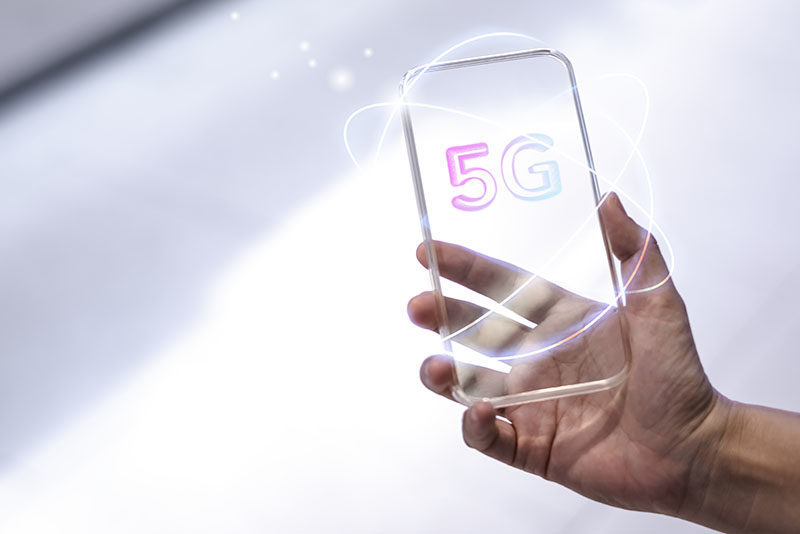5G quite simply stands for the “fifth generation” of mobile network. Roughly every decade, a new generation emerges, bringing with it faster, more reliable, and more accessible wireless service. 5G is designed to virtually connect everyone and everything together, including machines and devices. It promises faster download and upload speeds, ultra-low latency, expanded network capacity, and refined efficiency that will better connect industries and guarantee an overall improved user experience. This new generation of mobile network is used across three main types of connected services: enhanced mobile broadband, mission-critical communications, and the extensive IoT.
What is the difference between 4G and 5G?
The primary differences between the most recent two generations of mobile network are speed and reliability. To narrow it down further, 5G brings three specific new features to the table: bigger channels (and therefore swifter data), reduced latency (more responsive), and the ability to connect with several more devices at once. 5G also gives carriers more options in terms of airwaves than 4G did by opening up “high-band” airwaves, which will be explored in more depth later on.
Yet while 5G certainly provides greater advantages compared to the previous generation, 5G isn’t in fact a complete break from 4G. 5G phones all still rely on 4G networks and coverage to some degree. By using 4G to establish initial network connections, 5G was originally what’s called “non-standalone.” Recently, we’ve seen 5G begin to successfully operate in “standalone” networks, but the networks lose significant performance without support from 4G, which is why 5G phones have been designed to transparently blend 4G and 5G channels together to ensure a smooth network connection for the user.
How does 5G work?
Returning to the concept of “high-band” airwaves, 5G operates on a spectrum of radio frequencies in order to process larger amounts of data in smaller amounts of time. If 5G were a highway, it would have several spacious lanes, guaranteeing little to no congestion. There are three distinct radio spectrums 5G can run on: low-band, mid-band, and high-band (as previously mentioned). The lower the frequency, the wider the reach but the slower the connection, and vice versa. 5G is the first mobile network to successfully operate on a high-band radio frequency, so despite its limited reach, 5G possesses the capability to reach basement floors and penetrate through thick walls.

When and where is 5G available?
While 5G is technically already available nationwide and you can go out and buy a 5G phone today, we’ve only thus far seen glimpses of what 5G will provide. Widespread rollout of 5G will take several years, not only because of the expensive high-tech equipment and infrastructure needed to sustain 5G but also due to the amount of time it’ll take to set up said equipment, which will need to be everywhere if 5G is to be an option to everyone around the world. And despite 5G being nationwide, that doesn’t mean it’s available everywhere; it all depends on your service provider and your location. Service providers like AT&T, Verizon, and T-Mobile all offer 5G coverage maps to show you where the new mobile network can be offered.


